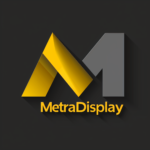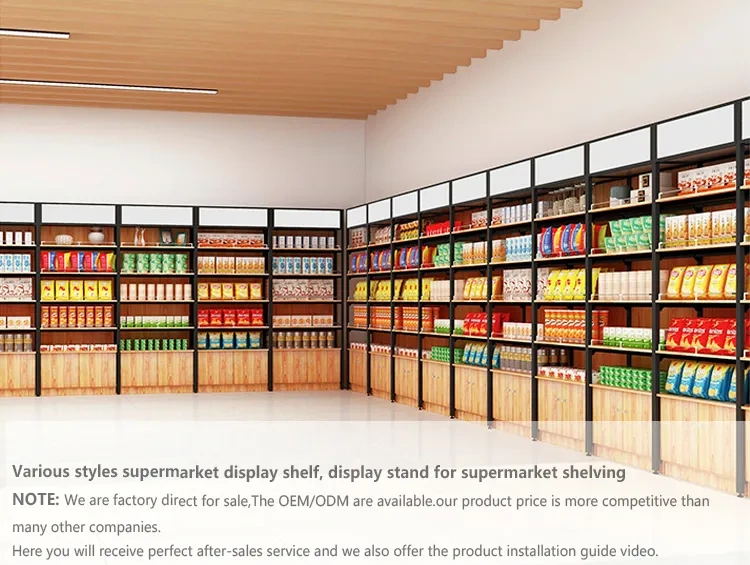
A whopping 85% of small business owners say retail shop shelving tops their list of retail fixtures.
There’s a good reason behind this popularity. Good retail shop shelving units don’t just store merchandise—they boost your bottom line. Stores that display their products well see higher sales and better reviews from customers.
Retail shelving systems do much more than show products. They direct customer traffic, shape buying choices, and showcase your brand’s identity. The right retail shelving solutions can turn a simple shopping trip into a memorable experience. They help customers find products easily and make shopping fun.
You might want to think about traditional gondola shelving—you’ll see these most often in retail stores’ main areas. But there are many specialized types of shelves for shops too. Your choice counts. While 80% of store owners focus on looks when picking displays, they also care about how long they’ll last and what they cost.
This piece will show you what matters most when picking the perfect shelving for your retail space. You’ll learn how to make your fixtures both show off your products and boost your customers’ shopping experience.
Understanding Retail Shop Shelving Systems
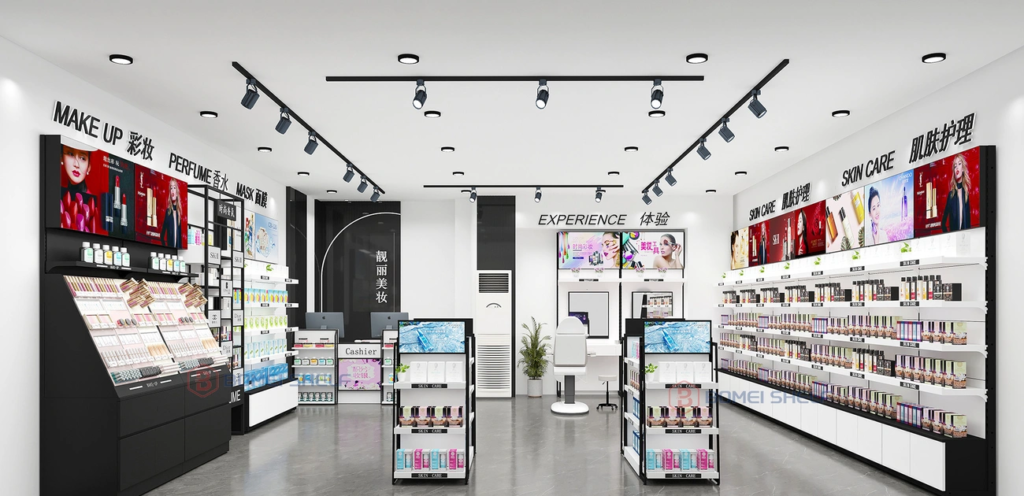
Retail shop shelving does more than store products—it plays a key role in your selling strategy. Retailers need to understand these systems to make smart choices about their display setup.
What makes retail shelving different from storage shelving
Retail shelving is different from warehouse or storage shelving in both design and purpose. Warehouse shelves focus on functionality and storage capacity, while retail shelving showcases products and helps customers find what they want. Storage shelving can handle heavy loads and bigger quantities, but retail shelving puts product presentation first.
The materials used tell a similar story. Warehouse shelving uses tough materials like steel or aluminum to hold heavy weights. Retail shelving features lighter materials such as wood, glass, or decorated metals. This happens because retail shelving needs to create an appealing shopping environment rather than just store inventory.
Common types of shelves for shops
Retailers can choose from these distinct shelving options:
- Gondola shelving: The most popular freestanding retail fixture that creates aisles when placed end-to-end. These shelves sit at eye level to boost sales.
- Endcaps/Gondola ends: These displays at aisle endings showcase promotional or seasonal items.
- Wall-mounted shelving: This type saves floor space while keeping paths clear for shoppers.
- Pegboards: These display hanging items with adjustable hooks that optimize space.
- Wire shelving: A tough and flexible option that works in retail spaces of all types.
- Dump displays: Self-service bins for small items that create a bargain atmosphere.
How shelving supports product visibility and flow
Good retail shelving systems help customers spot products quickly—this matters because shoppers will give up if they can’t find items fast enough. Smart shelf placement creates natural paths through your store and guides customers past featured items.
Studies show that product facings (items displayed side-by-side) directly affect sales. You can boost sales by 20% just by doubling facings. Products placed at eye level—the “strike zone”—sell better because customers see them more easily.
The right retail shelving changes how shoppers interact with your merchandise and shapes their buying decisions beyond simple product availability.
Key Factors to Consider Before Choosing Shelving
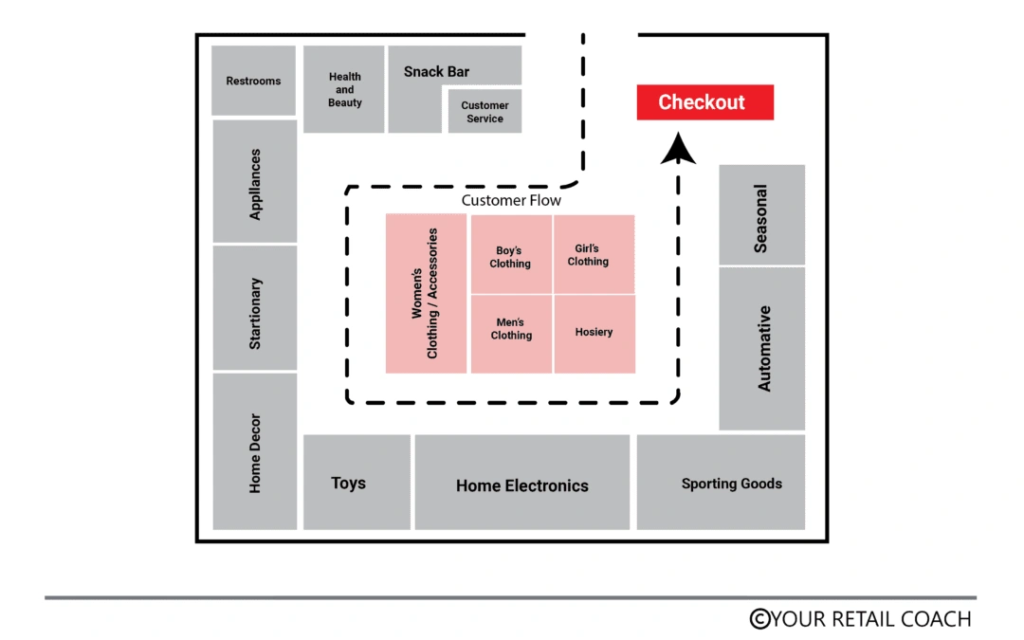
Choosing the perfect retail shop shelving goes beyond just looks. Store owners need to think about several practical elements that optimize operations and keep customers happy before making this significant investment.
Store layout and available space
Your retail space’s setup determines the best shelving systems. You should measure your available floor space, ceiling height, and aisle width before buying any fixtures. Research shows customers move counterclockwise through stores and look left when they enter. So, your shelving layout should work with this natural flow pattern.
A herringbone layout with one main pathway works best for smaller spaces. Stores with many SKUs can benefit from a grid layout that separates product categories naturally. A study by Universitas Mercu Buana showed some stores boosted profits by reducing store size with a well-planned grid layout.
Product size, weight, and category
Each product category needs specific display solutions. Heavy items need sturdy materials like steel, while lighter products work well with aluminum or PETG. Shelf planners must adjust boards regularly based on product sizes.
Your shelf space can change a lot when product packaging dimensions change. To name just one example, taller products might mean removing a whole shelf from a gondola.
Material durability and maintenance needs
Different shelving materials each have their benefits:
- Chipboard: Works well in dry, low-humidity spaces like offices and archives
- Melamine: Handles moderate humidity, cleans easily, suits most warehouses
- Galvanized steel: Fights corrosion, great for humid spaces
- Metal: Holds the heaviest merchandise
The environment’s humidity levels, temperature changes, and chemical exposure will determine which material lasts longest.
Accessibility for customers and staff
Good retail fixtures should work for everyone. More than 1.3 billion people worldwide (16% of the population) have disabilities. Making shelving accessible means wide aisles for wheelchairs, split-height counters, and keeping popular items within easy reach.
Accessible design helps all shoppers—57% say physical barriers hurt their view of the store. Features like clear signs with strong color contrast and good lighting help both disabled and non-disabled shoppers have a better experience.
How Shelving Affects Customer Experience and Sales
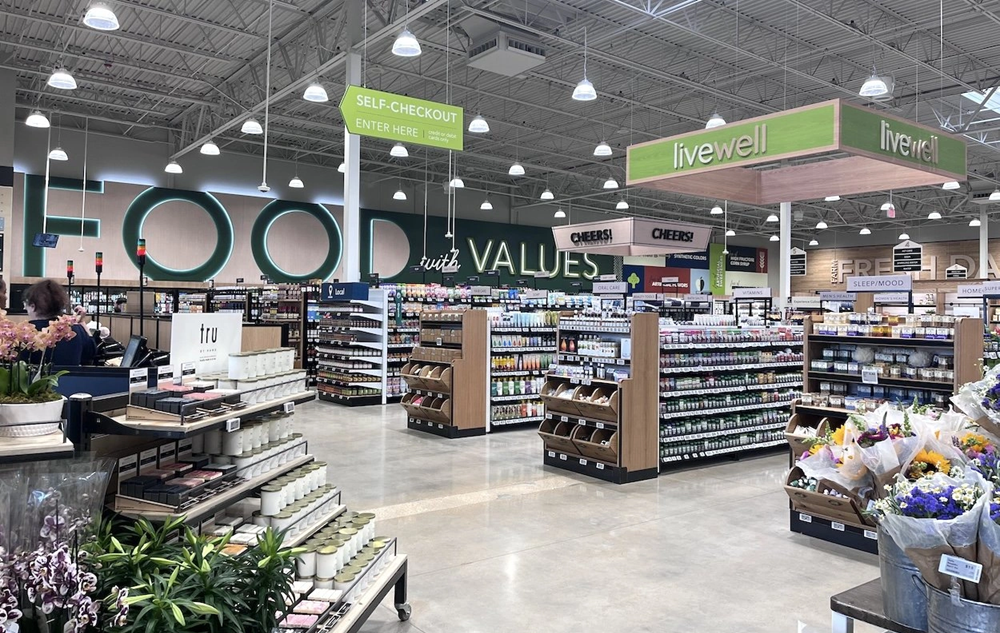
Smart retail shop shelving shapes how customers behave and what they buy. Your shelving setup can determine whether products sell quickly or sit untouched.
Shelf height and product placement zones
“Eye level is buy level” stands as a proven retail principle. Products at eye level (about 160-180 cm) outsell items on other shelves by 35%. Retail stores typically divide their shelving into these vertical zones:
- Stretch zone (180-210 cm): Best spot for premium and specialty items
- View zone (160-180 cm): Most valuable space that showcases bestsellers and high-margin products
- Reach zone (80-160 cm): Ideal space for fast-moving items
- Stoop zone (0-60 cm): Suited for bigger items and everyday necessities
Boosting impulse buys with endcaps and checkout displays
Endcaps at aisle ends work as powerful sales boosters. They increase product visibility by 93% and drive sales up by 32%. Well-designed endcaps trigger impulse purchases, which make up 40%-80% of all sales. Checkout displays also catch customers’ attention during wait times, making them perfect spots for unplanned purchases.
Building smooth traffic flow with shelving layout
Warehouse-style tall shelves give shoppers a sense of value and abundance. Research shows that wide aisles paired with tall shelves create the best shopping environment, while narrow aisles with tall shelves perform poorly. A well-planned traffic flow guides customers past key products without creating frustrating bottlenecks. Retailers place popular items at the store’s back to lead shoppers past impulse products during their shopping trip.
Optimizing Your Retail Shelving Solutions
Your retail shelving solutions need smart optimization strategies that go beyond simple setup. Smart implementation can improve both space usage and sales results dramatically.
Using vertical space and corner units
Vertical merchandising helps retailers make the best use of height and increases product visibility at different eye levels. Tall shelves along walls create a high-volume impression while they free up floor space. Corner units turn dead zones into productive display areas with minimal footprint. These strategic fixtures can boost exposure to high-value items, especially in high-traffic intersections.
Modular and adjustable shelving units
Adaptable shelving systems come with reconfigurable compartments that fit everything from small office supplies to large equipment. These versatile fixtures expand without needing extra storage infrastructure. Modular units need less specialized installation expertise, which makes them perfect for stores that change layouts often.
Balancing esthetics with functionality
Good retail shop shelving creates harmony between visual appeal and practical needs. Functionality should come first, but the fixture’s looks still add substantially to brand identity. Weight requirements and environmental factors play a key role in material selection.
Choosing between custom and ready-made shelving
Ready-made shelving saves money and sets up quickly. It works well with budget constraints or temporary displays. On the other hand, custom solutions fit unique spaces perfectly and can include specialized features like integrated lighting or pull-out compartments.
Conclusion
Your choice of retail shop shelving does more than just store products. This piece shows how the right shelving systems can substantially affect customer experience, traffic flow, and your store’s bottom line.
Retail environments and merchandise types play a key role in choosing between gondola shelving, wall units, or specialized displays. Store owners should review their space, product sizes, and customer movement patterns before they make their final choice.
Smart product placement helps tap into sales potential. Eye-level positioning, endcap utilization, and checkout displays work together. They maximize impulse purchases and create an accessible shopping trip. These considerations make shopping comfortable for everyone, including customers with disabilities.
Today’s retailers must balance function and style. Modular systems flex with changing merchandise needs. Custom solutions create unique branding opportunities. Whatever path you pick, good retail shelving changes spaces and guides customer behavior. It works as a silent salesperson to improve your retail success.
The right shelving solution acts as the foundation for effective visual merchandising. It shows your products in the best light and reflects your brand’s identity. Take time to review your needs and think about future growth. Pick systems that support your retail vision now and in the future.
Key Takeaways
Choosing the right retail shelving is crucial for maximizing sales and creating an optimal shopping experience. Here are the essential insights every retailer should know:
• Eye-level placement drives sales: Products positioned at eye level (160-180 cm) sell 35% more than those on other shelves, making strategic height placement critical for profitability.
• Endcaps boost product exposure by 93%: These aisle-end displays increase sales by approximately 32% and are prime real estate for promotional items and impulse purchases.
• Measure your space before buying: Carefully assess floor space, ceiling height, and aisle width to ensure your shelving complements natural customer flow patterns and store layout.
• Match shelving materials to your products: Heavy merchandise requires steel construction, while lighter items can use aluminum or wood—consider durability, maintenance needs, and environmental factors.
• Accessibility benefits everyone: Wide aisles and reachable product placement not only accommodate customers with disabilities but also improve the overall shopping experience for all visitors.
• Modular systems offer flexibility: Adjustable shelving units adapt to changing merchandise needs and seasonal displays without requiring complete fixture replacement.
Remember that effective retail shelving functions as a silent salesperson, guiding customers through your store while showcasing products optimally. The right choice balances functionality, aesthetics, and accessibility to create a shopping environment that encourages discovery and drives sales.
FAQs
Q1. What are the most important factors to consider when choosing retail shelving? The key factors include store layout and available space, product size and weight, material durability, and accessibility for customers and staff. It’s crucial to measure your space, match shelving materials to your products, and ensure the shelving complements your store’s flow and layout.
Q2. How does shelf height affect product sales? Shelf height significantly impacts sales. Products placed at eye level (160-180 cm) tend to sell 35% more than those on lower or upper shelves. Retailers often organize shelving into zones, with the “view zone” at eye level being prime real estate for bestsellers and high-margin products.
Q3. What are endcaps, and why are they important? Endcaps are displays located at the ends of aisles. They are important because they can increase product exposure by 93% and boost sales by approximately 32%. Endcaps are excellent locations for promotional items and encouraging impulse purchases.
Q4. How can retail shelving improve customer experience? Well-designed retail shelving can create smooth traffic flow, make products more visible and accessible, and contribute to the overall store atmosphere. Features like wide aisles, clear signage, and strategic product placement can significantly enhance the shopping experience for all customers.
Q5. What’s the difference between custom and ready-made shelving? Ready-made shelving offers cost advantages and quick implementation, making it suitable for budget constraints or temporary displays. Custom shelving, on the other hand, provides precise fits for unique spaces and can incorporate specialized features like integrated lighting. The choice depends on your specific needs, budget, and long-term plans.
